# Overview
# What is SPI?
SPI is a production tracking, reviewing and data transfer solution for animated tv series and long-feature films. It is a web application proposed as a service which helps producers to manage the creation of assets (characters, backgrounds, FX, props etc.) and episodic shots (from an episode or a sequence) and to follow their construction in a multi-sites environment.
Assets and shots go through a succession of steps defined by the line producer from very early stages (creation, animatic) to final stages (rendering, compositing). The succession of those steps is called a workflow. Every asset or episodic shot has its own workflow which basically says how it will be built.
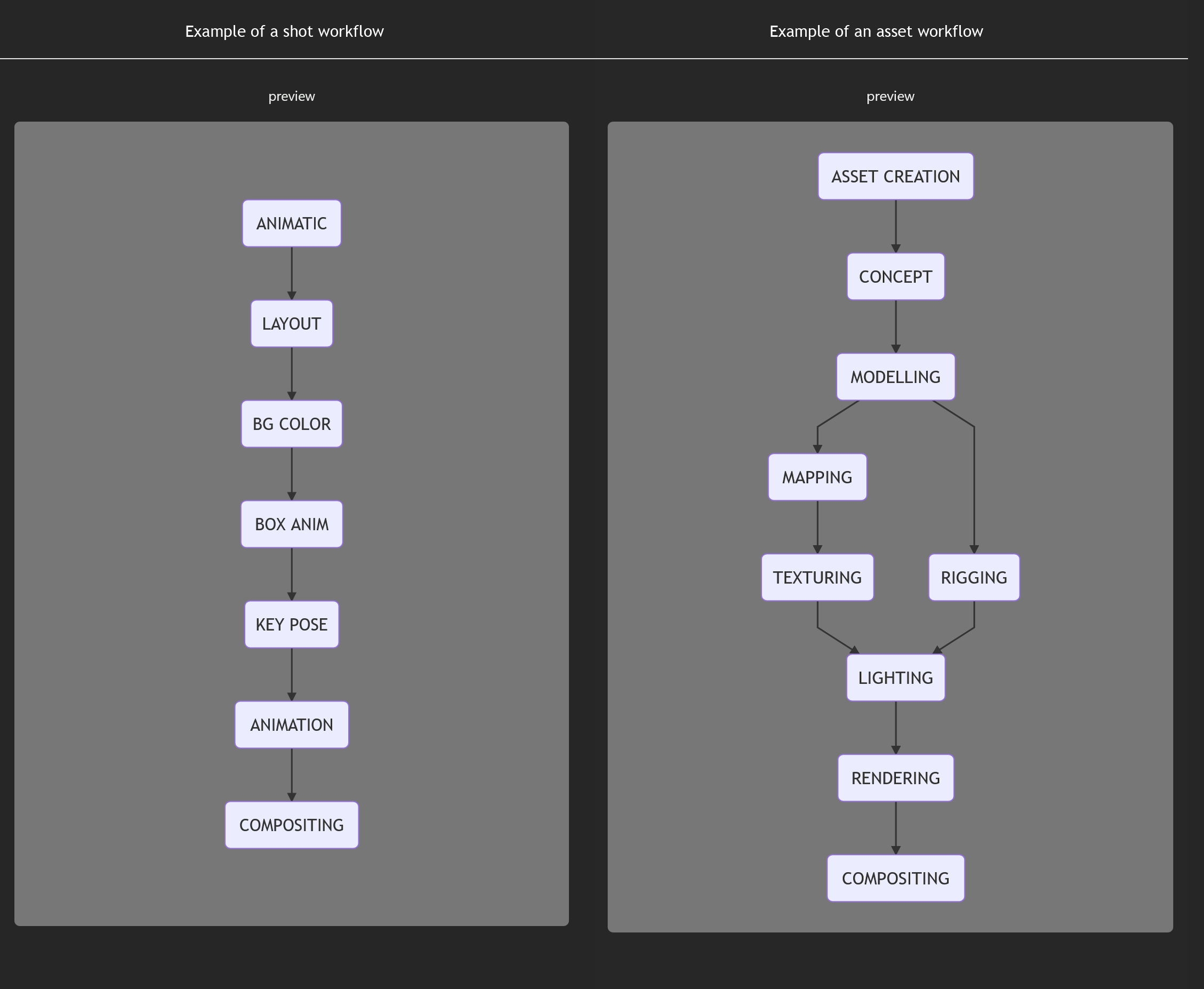
Since SPI is interfaced with many video editing software (Avid Media Composer, Premiere Pro, Final Cut Pro, ToonBoom Story Board Pro), episodic shots can be automatically created at the animatic step. The edl and the corresponding videos exported from those editing software are fed to the edl processor which automatically cuts the episodic shots.
The workflow editor allows line producers to create directed acyclic graphs (DAG) where the nodes are the different steps an asset or a shot will go through in its production process. This representation of workflows allows to cope with most animation production pipelines.
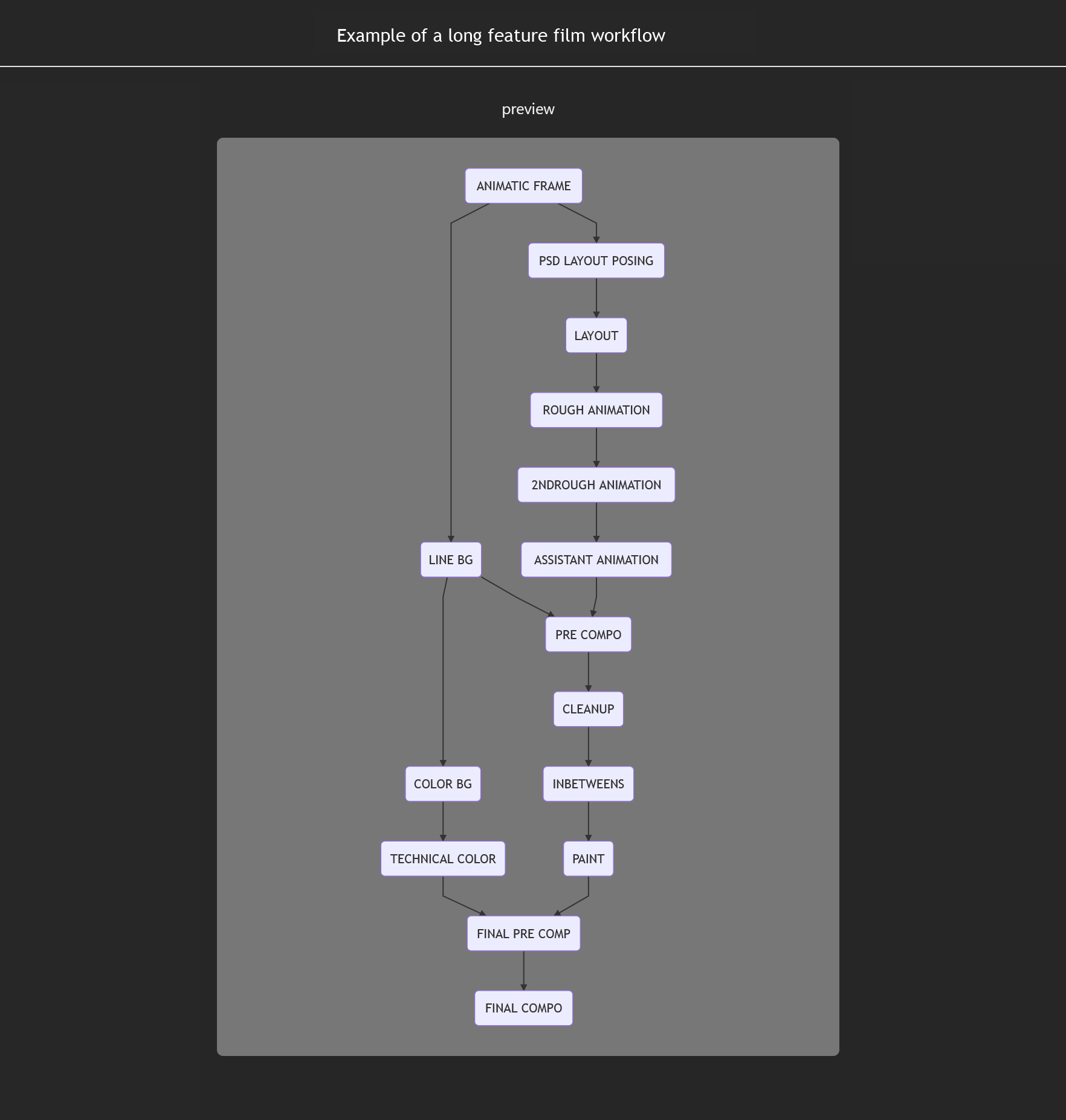
Any node or step from a workflow can be assigned to a studio or a CG artist and the line producer can define the kind of medias which are expected at any given step.
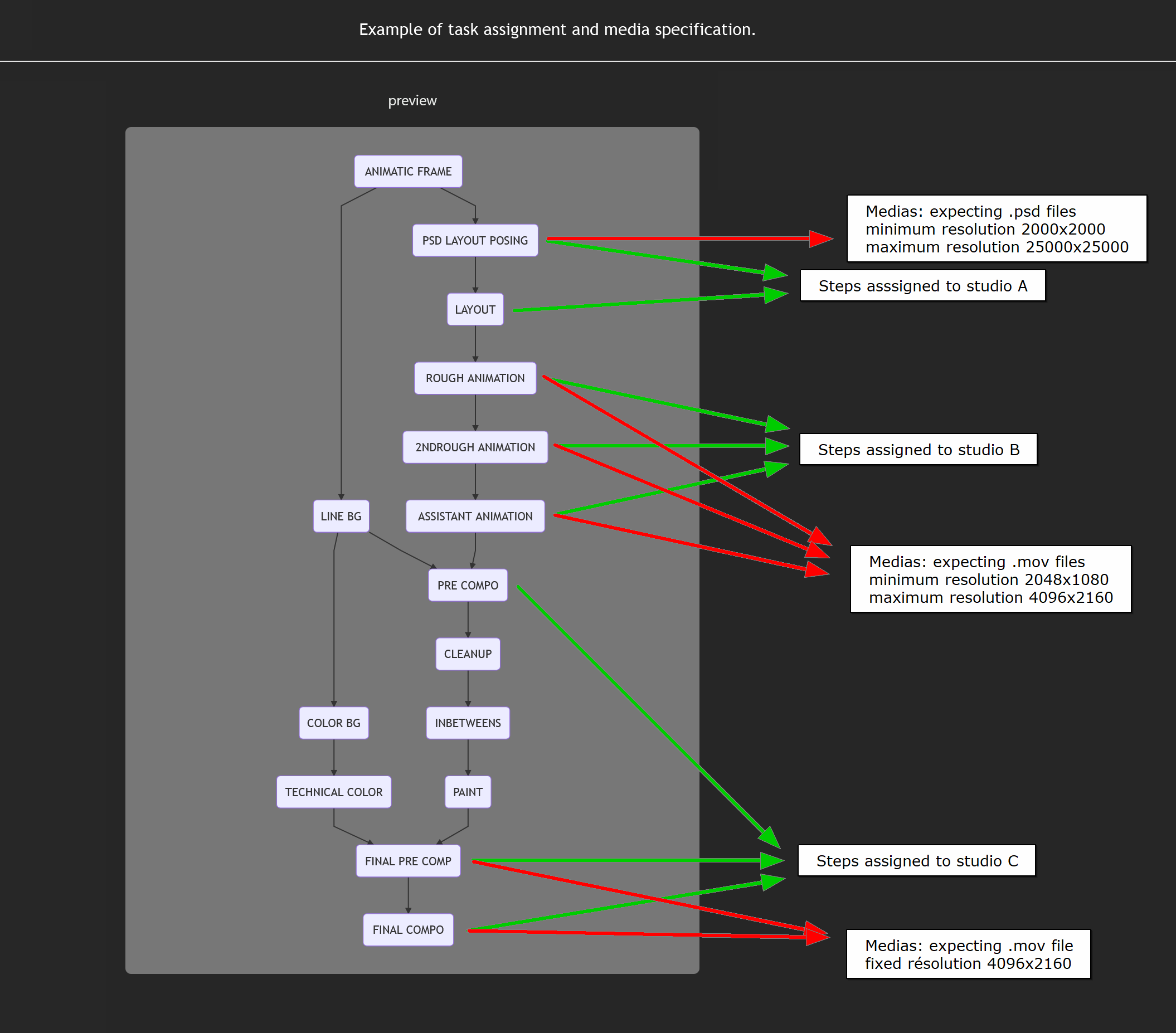
Each time a CG artist or a studio submits a shot or an asset at a given step, the production team can visualize the deliveries and review the elements for approval. Upon approval, the next step(s) in the workflow can be submitted.
In order to facilitate the reviewing process, SPI provides several media players for content visualization and reviews. Those players can play and compare medias from different steps in various ways, they offer advanced functionalities such as the ability to incrust notes, comments and medias or to annotate videos at any given frame.
SPI also provides a production report editor which allows line producers and studio directors to easily create then consult their own custom production reports.
FOCUS
A very important point is that SPI is provided as a service: when a client contacts us for an issue or a request, it is immediately taken into account and a solution will be provided ASAP. The issue resolution time is much faster and is in no way comparable to what software editors of similar solutions can propose.
# How does SPI work?
FOCUS
SPI adapts to all production configurations. These configurations can be easily setup by the production team with or without the help of SPILINKS.
You first start with the creation of an episode. You then create assets and episodic shots in this episode.
PREREQUISITE
In order to create your episodic shots, you will need to have an animatic and its corresponding edl. This (animatic, edl) pair can come from any edit suite.
With this (animatic, edl) pair, the animatic will be cut according to its edl and all the episodic shots will be automatically created.
With the building processes of these assets and shots in mind, the creation of all the steps needed for the fabrication of these elements from scratch to finish can now be done. Once all these steps have been created, you will assemble them in specific workflows that you will assign to the assets and episodic shots you just created.
TIP
Since workflows can be easily built on the fly and then assigned to assets and episodic shots, it is not necessary to create all workflows and steps at the start of a project. Workflows containing preliminary steps will be created at first, final steps can be created later on and existing workflows can be modified when needed to include these steps at any time during the fabrication process.
For each newly created step, you will define which media rule(s) are expected. If you do not find an appropriate media rule among the set of already defined media rules in SPI, you will create your own set of media rules and associate them with the steps you previously created.
At this stage:
- in the case of episodic shots, the very first step(s) after ANIMATIC in all these shot workflows can now be delivered.
- in the case of assets, the very first step(s) after ASSET CREATION in all these asset workflows can now be delivered.
However, we haven't specify who will be able to deliver these elements. Let's see now how this can be achieved.
For each partner involved in your project, you create a new organisation and grant the rights to access the episode and the steps previously created for this new organisation.
For each organisation, you also create one or several groups and for each group, you define its permissions to perform most sensitive operations in SPI. For example the director's assistant group of a producer organisation will have the right to approve elements or to send them in retake whereas the line producer assistant group may not have this right.
You now can create users and then include each user in one your previously created group.
You are now in a position to decide who will be able to deliver elements. For any episode and any step, you can choose either the organisation or the user who will be able to submit this asset or episodic shot.
FOCUS
Keep in mind that since SPI is provided as a service all the operations listed above can be performed on behalf of the client by SPILINKS personnel at no extra charge.
The full fabrication delivery and review process can now begin.
People in charge of deliveries, usually studios and cg artists, log into the SPI application and check in their job list if they have anything to deliver. They may also be informed by email if there are any element(s) for them to submit.
When they upload an element from their job list, they have to check in the task history if the file(s) they just submitted comply with the media rules specified for this element.
If the checkin is successfull, they have completed their job as far as this element is concerned. This element is now pending review.
On the review side, directors, assistant directors and supervisors log into the SPI application and check in their respective review list if they have anything to review. They also may also be informed by email if there are any element(s) for them to review.
The elements reviewed can take two directions:
- either they are approved and they move to the next step(s) according to the workflow they follow
- or they are sent in retake with some modifications to be done by the cg artist who initially submitted this element.
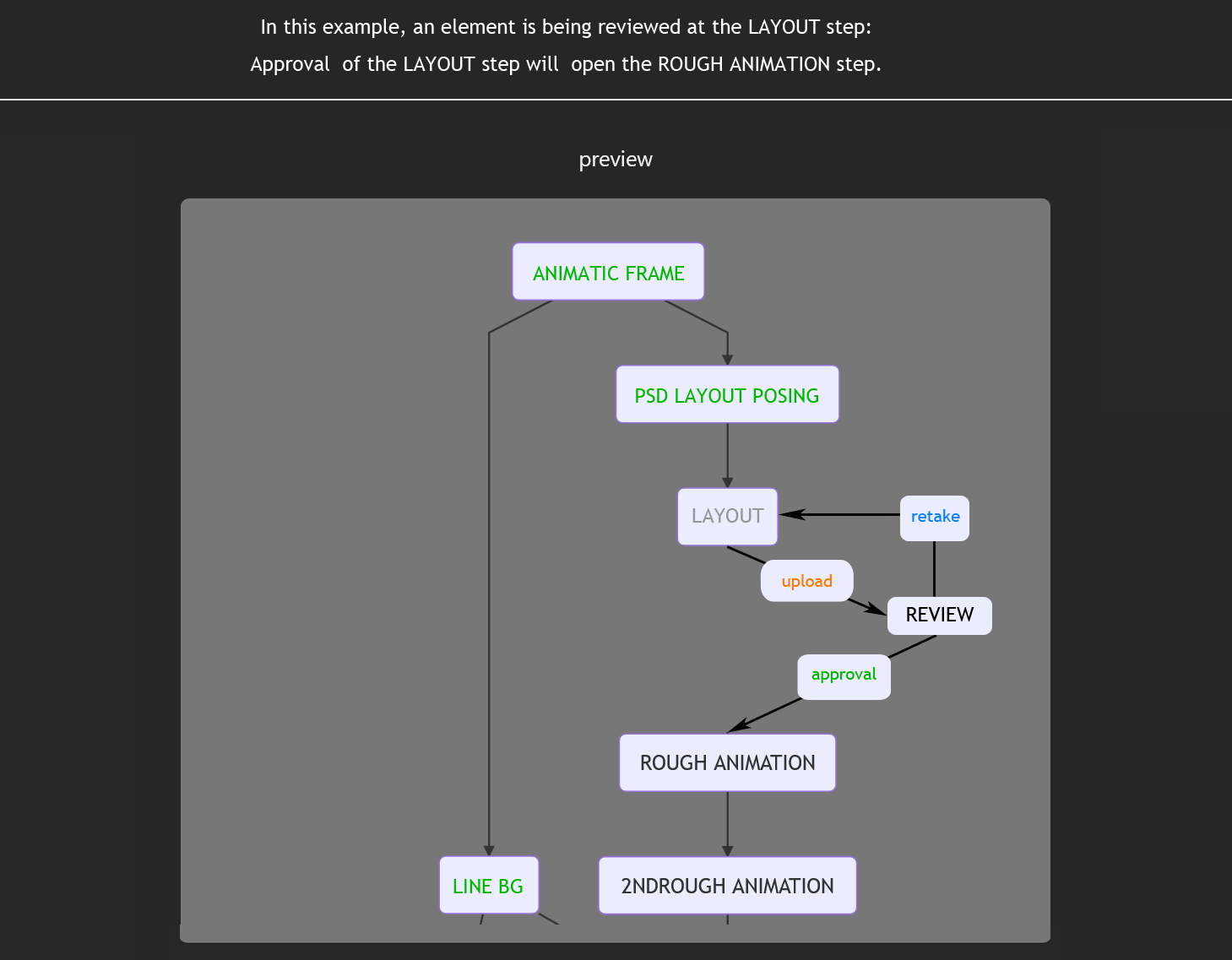
That way, elements navigate in their workflow from preliminary steps to final steps. When all elements have reached their final step, the project has been completed.
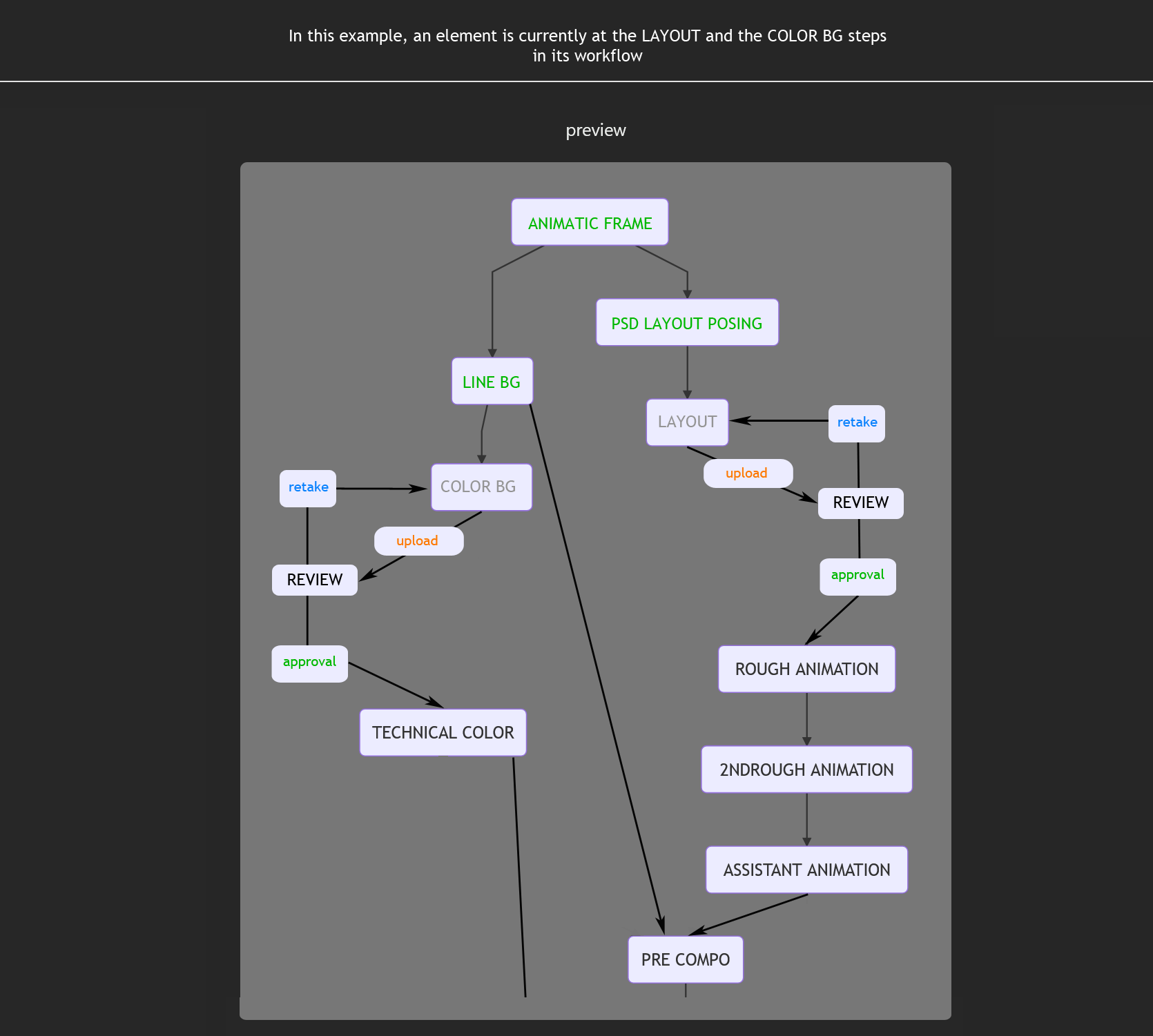
All along this fabrication process, line producers and studio supervisors can edit and consult their own customized production reports thus monitoring and controlling the fabrication process.
# Features
The most important features of SPI are:
Additional features:
Viewer →
